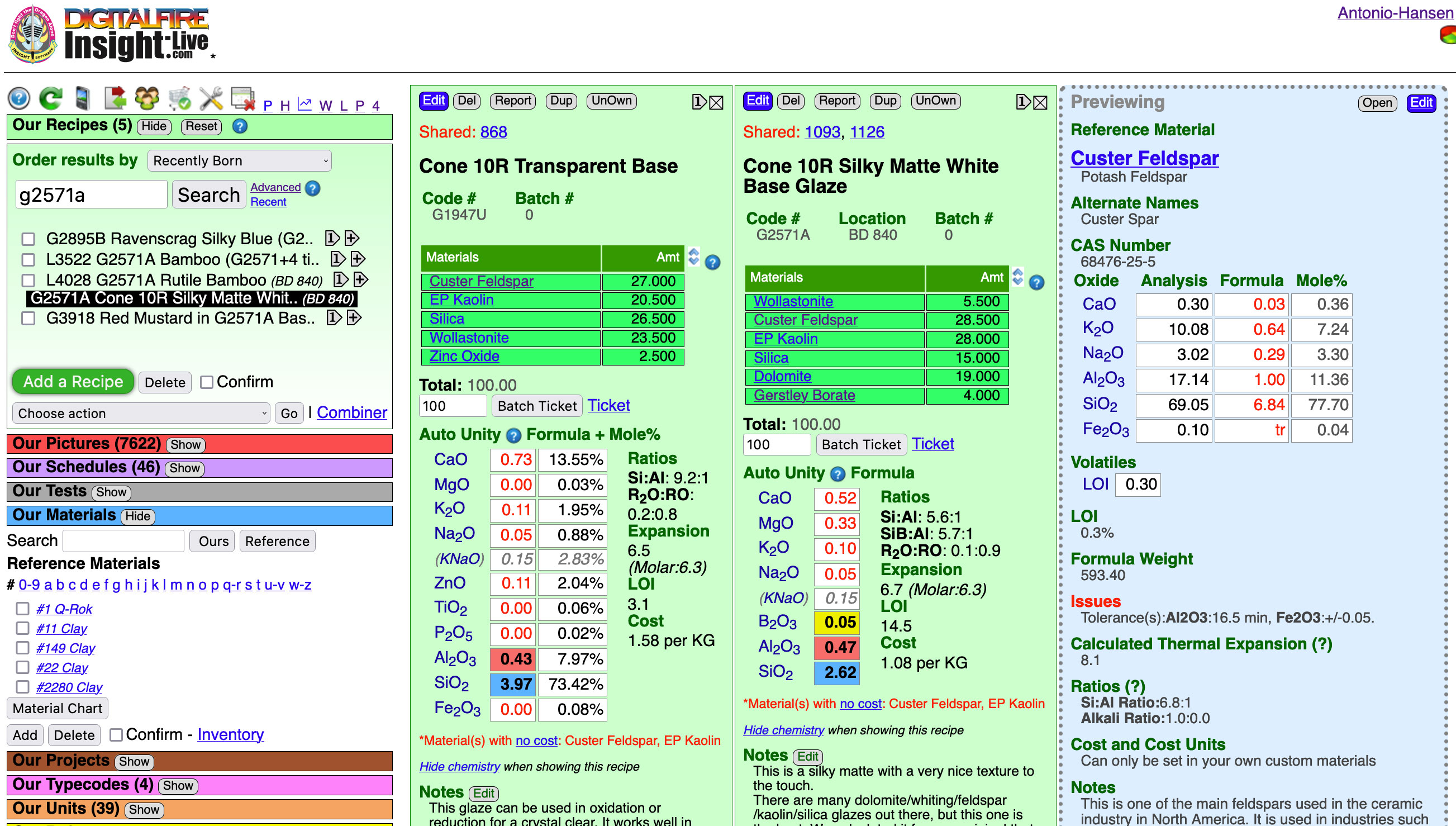What can you do using glaze chemistry? More than you think!
There is a direct relationship between the way ceramic glazes fire and their insight-live.com/glossary/118">chemistry. These green panels in my Insight-live account compare two glaze recipes: A glossy and matte. Grasping their simple chemistry mechanisms is a first step to getting control of your glazes. To fixing problems like crazing, blistering, pinholing, settling, gelling, clouding, leaching, crawling, marking, scratching, powdering. To substituting frits or incorporating available, better or cheaper materials while maintaining the same chemistry. To adjusting melting temperature, gloss, surface character, color. And identifying weaknesses in glazes to avoid problems. And to creating and optimizing base glazes to work with difficult colors or stains and for special effects dependent on opacification, crystallization or variegation. And even to creating glazes from scratch and using your own native materials in the highest possible percentage.
Pages that reference this post in the Digitalfire Reference Library:
GLLE Glaze Leaching Test, Where do I start in understanding glazes?, ChatGPT was completely wrong about the cause of glaze crazing in 2023!, Is it practical to move this cone 10 "chaos pottery glaze" to cone 6?, Click here for case-studies of Insight-Live fixing problems, Pinholing, Base Glaze, Leaching, Food Safe, Glaze shivering, Ceramic Material, Glaze Blisters, Glaze Chemistry, Glaze Pinholes, Pitting, Glaze Blisters

This post is one of thousands found in the Digitalfire Reference Database. Most are part of a timeline maintained by Tony Hansen. You can search that timeline on the home page of digitalfire.com.
